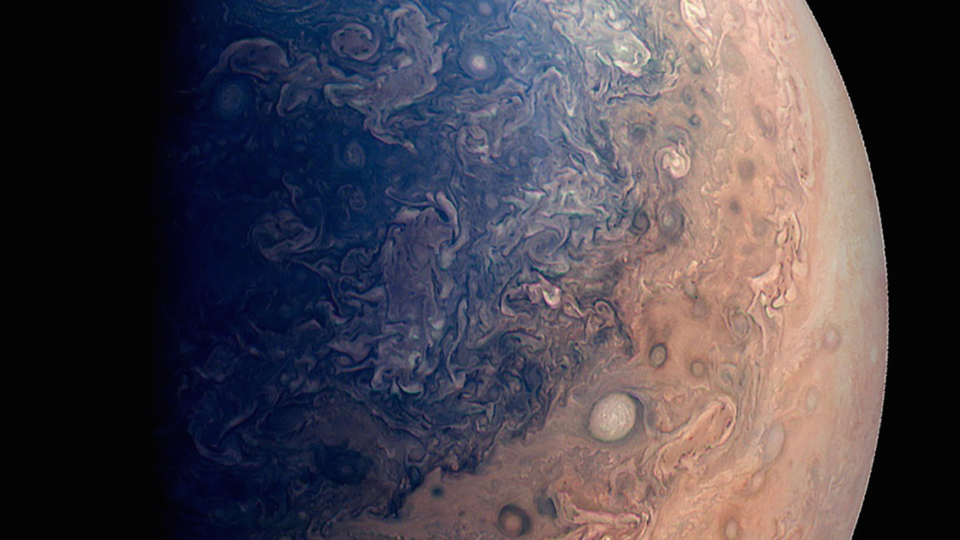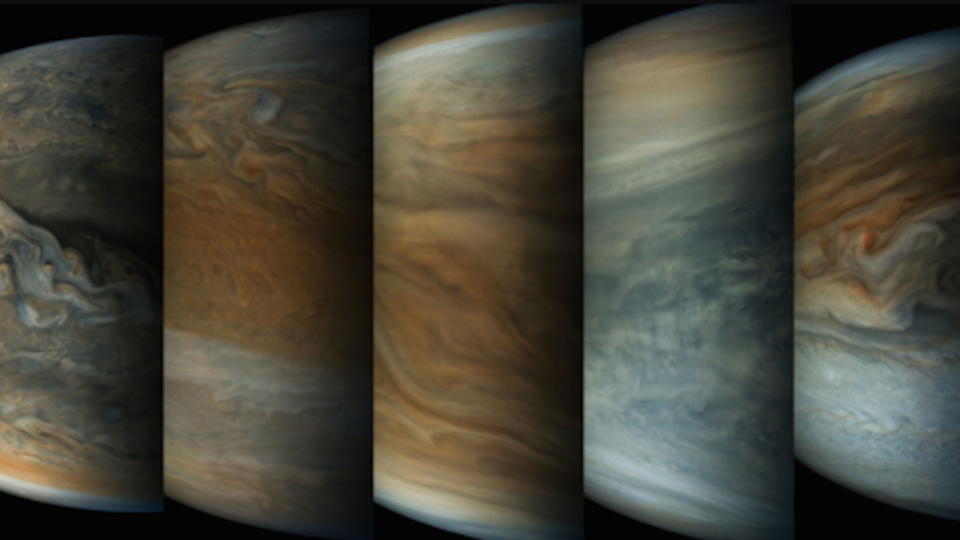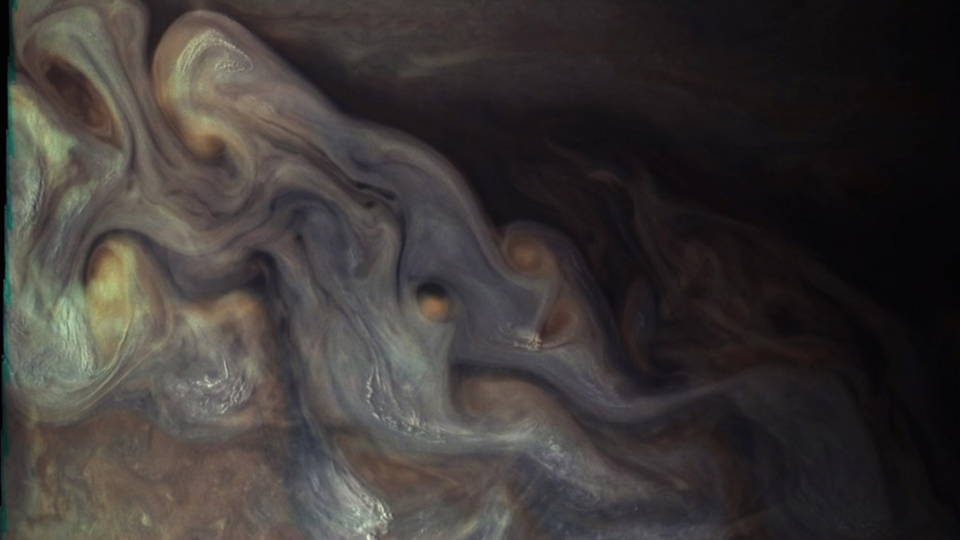Each month, renowned astronomers share their latest research at Morrison Planetarium.
Universe Update
Jupiter's Deep Beauty
The first findings from the Juno mission prove that Jupiter is as complex as it is beautiful.
Is Jupiter’s beauty only skin deep? According to 46 scientific papers published yesterday—absolutely not! Cyclones the size of Earth! A lumpy magnetic field! Deep plumes of ammonia! The findings—the first from NASA’s Juno mission—describe our gas giant neighbor as complex, mysterious, and beautiful all the way down to its fuzzy core.
“What we’ve learned so far is earth-shattering. Or should I say, Jupiter-shattering,” says Scott Bolton, Juno’s principal investigator from the Southwest Research Institute. “Discoveries about its core, composition, magnetosphere, and poles are as stunning as the photographs the mission is generating.”
Juno is in a polar orbit around Jupiter, and the majority of each orbit is spent well away from the gas giant. But once every 53 days, its trajectory approaches Jupiter from above its north pole, where it begins a two-hour transit (from pole to pole) flying as close as 4,200 kilometers (2,600 miles) above the cloudtops. The JunoCam public outreach camera snaps pictures that grace our news feeds, but eight additional science instruments are constantly collecting data. Downloading the six megabytes of data collected during each transit can take a day and a half. (And you thought your internet was slow!)
The spacecraft is mapping Jupiter’s gravitational and magnetic fields to see beneath the thick clouds and map the planet’s interior structure and core—whose size and very existence has been argued about for decades. “Juno’s gravity field measurements differ significantly from what we expected, which has implications for the distribution of heavy elements in the interior, including the existence and mass of Jupiter’s core,” Bolton explains. Scientists think a dynamo—a rotating, convecting, electrically conducting fluid in a planet’s outer core—is the mechanism for generating the planet’s intense magnetic fields.
In fact, Juno is finding that Jupiter’s magnetic field is even stronger than models expected, although irregular in shape. “Juno is giving us a view of the magnetic field close to Jupiter that we’ve never had before,” says Jack Connerney, lead for the mission’s magnetic field investigation at NASA Goddard. “Already we see that the magnetic field looks lumpy: it is stronger in some places and weaker in others.”
In addition, Juno is designed to study the polar magnetosphere and the origin of Jupiter’s powerful auroras. Auroral emissions on our home (the famous Northern and Southern Lights) are caused by charged particles from the Sun that get revved up by Earth’s magnetic field and then slam into our atmosphere. Juno’s initial observations indicate that the process seems to work slightly differently on Jupiter, with charged particles also emanating from the gas giant. Auroras in reverse? Now that’s a surprise!
Finally, Juno is beginning to reveal what lies beneath Jupiter’s signature belts and bands. Juno’s microwave sounding instrument reveals that topical weather phenomena extend deep below the cloudtops, to pressures one hundred times Earth’s air pressure at sea level. “However, there’s a north-south asymmetry,” Bolton says. “The depths of the bands are distributed unequally. We’ve observed a narrow ammonia-rich plume at the equator. It resembles a deeper, wider version of the air currents that rise from Earth’s equator and generate the trade winds.”
But wait, there’s more! If you want to dive deeper, the papers are available here, here and here; and Juno promises to deliver even more remarkable discoveries in the near future.
“Every 53 days, we go screaming by Jupiter, get doused by a fire hose of Jovian science, and there is always something new,” concludes Bolton. “On our next flyby on July 11, we will fly directly over one of the most iconic features in the entire solar system—one that every school kid knows—Jupiter’s Great Red Spot. If anybody is going to get to the bottom of what is going on below those mammoth swirling crimson cloud tops, it’s Juno and her cloud-piercing science instruments.”


